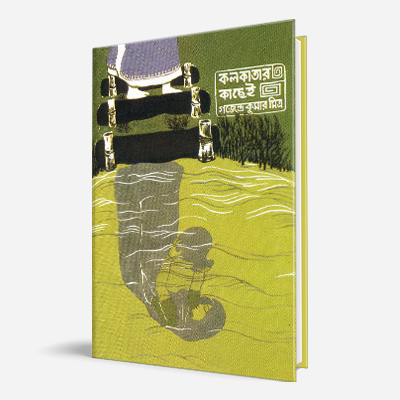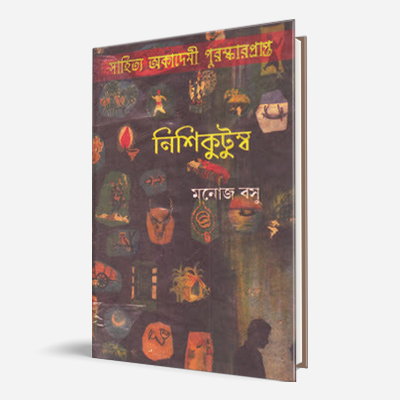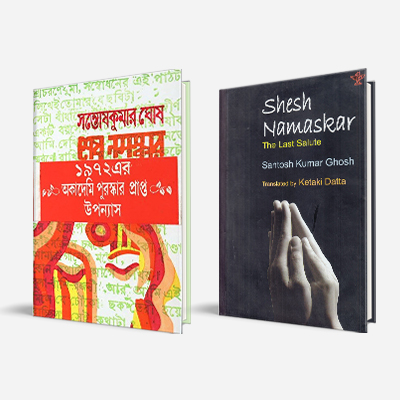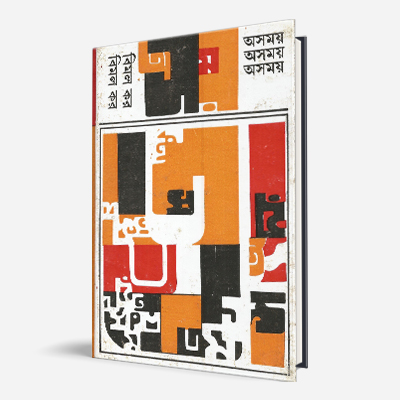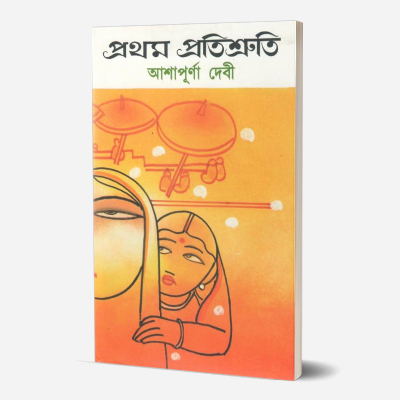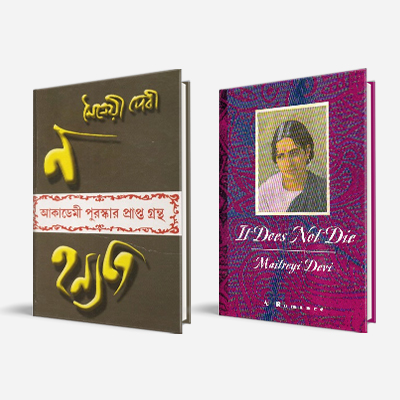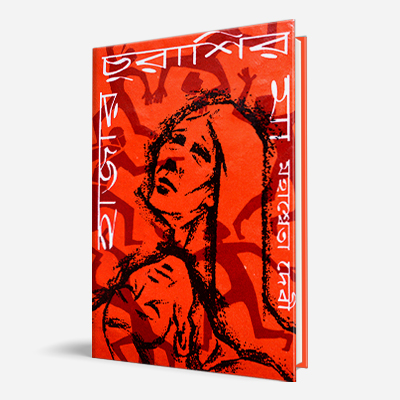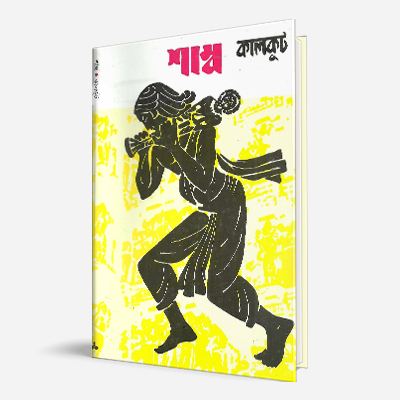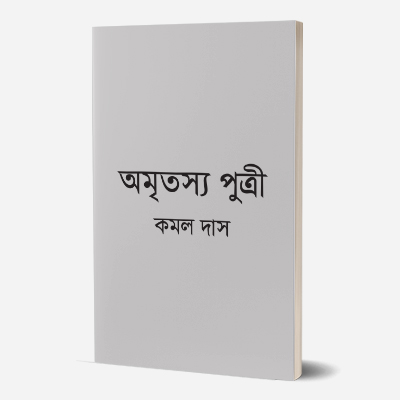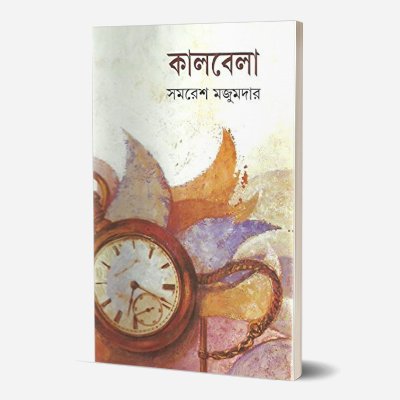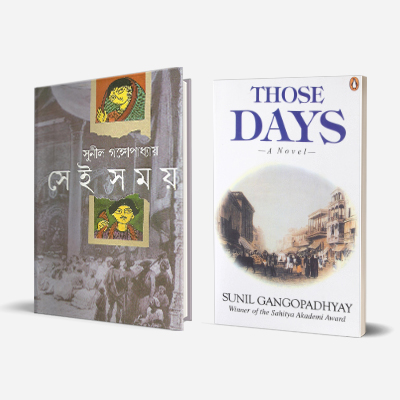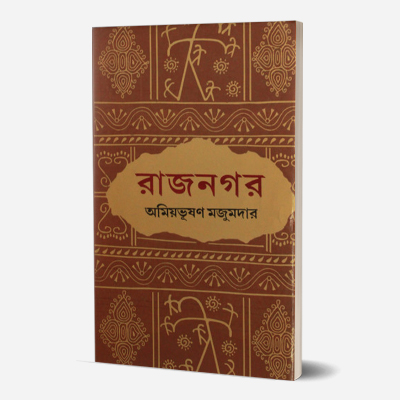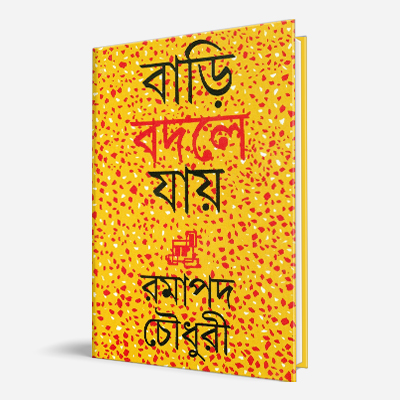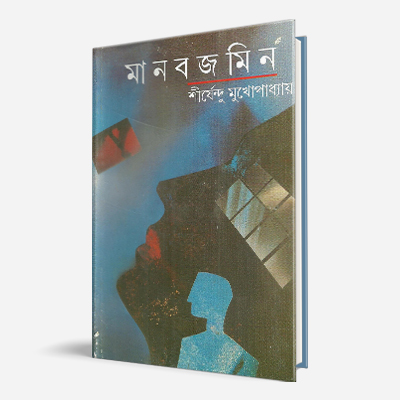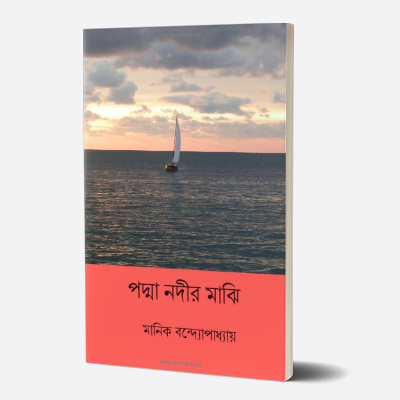Rajnagar
By Amiya Bhushan Majumdar
Rajnagar, a complex historical novel, is set in the former French Colonised Farasdanga area or Chandannagar in the years preceding and following the Sepoy Mutiny, 1857. The novel at its heart is an interwoven set of three different and exquisite love stories. It is a sophisticated account of the subterranean power politics of transition during colonial rule. The novel’s account of the cerebral aspects of that period’s contending cross-currents or religious beliefs is both vivid and perceptive. Majumdar experiments with unique methods of narration, at times juxtaposing the briefest of moments with minutely detailed expositions. It received the Sahitya Akademi Award in 1986 and has been translated into Telugu and English (by Kalpana Bardhan).
About the Author
Amiya Bhushan Majumdar (1918 –2001), known as the ‘Writer’s Writer’, was an Indian novelist, short-story writer, essayist and playwright. ‘The God on Mount Sinai’, a one-act play, serialized in two instalments in the magazine Mandira in 1944 was his first published writing. Promilar Biye, and Nandarani, two short stories published in the Purbasha in 1946 and in Chaturanga in 1947 respectively, immediately caught the attention of a special strata of readers and critics for the very individual prose style. During 1953-54 Garh Shrikhanda (in Purbasha) and Nayantara (in Chaturanga), two major novels started serialization almost simultaneously. In fifty years thereafter, Amiya Bhushan published 27 novels, 115 short stories, about 50 essays and 6 one-act plays. Considered one of the most noteworthy authors of modern Bengali prose, Majumdar’s works received significant critical acclaim and recognition—including the Sahitya Akademi Award for his novel Rajnagar in 1986. Poet Joy Goswami wrote on him, ‘As a (classical) singer moves from note to note, Amiya Bhushan moved from sentence to sentence. It takes time for the reader to overcome the spell it creates and to adjust himself with the movement. It becomes a lesson to new writers’ and ‘Amiya Bhushan was an inventor of new lands and has taught how to appreciate achievements with a highly sophisticated self-restraint.’
Bari Bodle Jay
By Ramapada Chowdhury
AWARD: Sahitya Akademi (1988)
Bari Bodle Jay has, at its centre, Dhrubo and Preeti, a couple who live in a joint family in a rented house in south Calcutta, near Kalighat on Harish Mukherjee Road, but dream of having their own space in the city. They look out for an apartment on rent and in the process realise how difficult it is to even get a small space for oneself in Calcutta, within their modest budget. Density and proximity are the two defining characteristics of urban spatial dimensions. And it is this facet of the urban space that results in categories like tenants and landlords that is explored in Bari Bodle Jay, which, also portrays the trials and tribulations of the urban dweller constantly on the move between different houses. The novel, which was based on Chowdhury’s own experiences as a tenant, received the Sahitya Akademi Award in 1988.
About the Author
Ramapada Chowdhury (1922 –2018) was a Bengali novelist and short story writer. Chowdhury started writing during the Second World War. He was associated with Anandabazar Patrika for many years, and edited its Sunday supplement. In all, he has written around 50 novels and over 100 short stories. He has also edited an anthology of stories originally published in Desh. He was conferred the Sahitya Academy award for Bari Bodle Jay in 1988. Among the other awards that Chowdhury won were the Rabindra Purashkar for ‘Ekhoni, and the Ananda Purashkar. Chowdhury believed that “quitting is an art” and decided to retire from writing—an unprecedented feat in the Bengali literary space. He went back to being a reader, as he had started out, leaving his mark as one of the very few writers who cast a dispassionate but probing eye on human weaknesses and the fault lines of society.
Also read
Banpalashir Padabali
Chowdhury’s biggest breakthrough came with the novel Banpalashir Padabali (1960)—based in rural Bengal—which was serialised in the prestigious literary Magazine Desh and this found hundreds of thousands of readers every week. The novel, which dealt with the tensions between two brothers, when one of their daughters married a government employee, won the Rabindranath Tagore Memorial International Prize and earned Chowdhury a permanent place among the pantheon of popular and revered Bengali writers. It was made into a film by the Bengali cinema megastar Uttam Kumar (1973), who directed as well as starred in it.
Abhimanyu
The story of Abhimanyu (1982) was based on the life and work of scientist Subhas Mukhopadhyay, who created India’s first and the world’s second test-tube baby in 1978. Subhash Mukhopadhyay was ostracised for his research in in-vitro fertilisation by the government, and eventually committed suicide. Based on the story, director Tapan Sinha made Ek Doctor Ki Maut in 1990, which went on to win several awards. The film, inspired by this true story, deals with the complications and “many pitfalls that are created by a lethargic political administration and depicts the lack of infrastructural support to Indian scientists with heart-breaking insight.”
Je Jekhane Danriye
Je Jekhane Danriye was first published in the Sharadiya ‘Desh’ in October 1972 and later published as a book. It has been translated into English as ‘Second Encounter’ by Swapna Dutta and published by Niyogi Books. The novel narrates the story of Anupam, a middle-aged professor with a meagre income, who was taking a vacation with his family in a little-known mining town and his chance encounter with his childhood love interest which turns their lives upside down. The novel, while exploring the myriad shades of love, compels its readers to confront and introspect on some fundamental questions—How deep and dependable is unspoken and unfulfilled love? Does physical proximity necessarily bring one closer? Do values and outlooks change when one considers one’s children? What is love’s ultimate goal?” The novel was made into a critically acclaimed film in 1974 and broadcast as a radio play by All India Radio.
Manabjamin
By Shirshendu Mukhopadhyay
AWARD: Sahitya Akademi (1989)
Referred to as a modern epic, Manabjamin won the Sahitya Akademi Award in 1989. The central character of the novel is Deepnath, and the story is woven with what happens to the families of his brothers and sister, his own emotional involvements and his reflective reaction to these happenings. The novel gives us a vivid picture of the unrelieved tragedy of the Indian middle-class life in the urban milieu and also of the palpable limitation of its range. It has an intensity about it which distinguishes it from the other works of this category. It is written in an impassioned style and the whole novel seems to be keyed to the same pitch to such an extent that every character in the novel tends to be equally clever and at times brilliant in his or her articulation. One may even get the impression that the central character spouts the author’s attitude to the human situation as he visualizes it.
About the Author
Shirshendu Mukhopadhyay is a famous Bengali author, known for creating the relatively new fictional sleuths Barodacharan, Fatik and Shabor Dasgupta. A deep undertone of spirituality runs through his works. They add to the depth, but never hinder the flow. Mukhopadhyay credits this to the influence of his guru Thakur Anukulchandra. Mukhopadhyay delved into the world of children’s literature in the mid-1970s, and got instant success with the novel Manojder Adbhut Bari. Mukhopadhyay has penned nearly 100 books of short stories and novels for adult readers, and 34 for teenagers.
Also read
Goynar Baksho
Originally published in 1993 by Ananda Publishers, Goynar Baksho is a novella by Shirshendu Mukhopadhyay which has also been translated into English as The Aunt Who Wouldn’t Die.It is a frenetic, funny and tug-at-your-heartstrings tale of love, family, and freedom centered around three generations of Mitra women who are surprising at every turn and defy all expectations—Somlata who got married into the dynastic but declining Mitra family, the embittered matriarch Pishima alias Roshomoyee who turns into a sharp-tongued ghost and a book-loving, scooter-riding, rebellious teenager, Boshon—and the different relationships they share with their heirloom, a box of jewels, which in turn, reflects the transition in the role of women in society as the characters reveal the gravity of their striking depth and definition. Aparna Sen adapted Goynar Baksho into an award-winning film of the same name in 2013.
Ghoonpoka (Woodworm)
An existential masterpiece published in 1967, Ghoonpoka (Woodworm) was Shirshendu Mukhopadhyay’s debut novel which came out in the annual Puja edition of the magazine Desh. It has been translated into 14 languages including English. It a rare and captivating examination of existential crisis in the canon of Bengali literature starts with its protagonist Shyam Chakraborty having just quit from his plush, secured and well-paying job in a reputed firm where he was in line for the big post, on account of an expletive used by an irate boss. For someone who was habituated to disciplined existence, terrific self-confidence and even a dash of smugness, taking exceptional care of his external appearance, and living in a cocoon where the vagaries of the outside world failed to touch him, the transition post the loss of his job turns out to be so striking that he turns into a different individual in a matter of days. His dynamism gets replaced with extreme stasis, ennui, and urban alienation as he wanders through bustling metropolis of Calcutta while steadily dissociating from his essential sense of being—palpably evoking the existential void and the oppressive meaninglessness which informed the raison d’être” of Kafka or Camus’s body of work. Nabaneeta Dev Sen, a well-known Bengali novelist and critic, in her appreciation of the book observes: ‘Shirshendu’s protagonist believes in purging, in divine grace, and in rebirth. Death for him is not a closure but a fresh start. It is a tale of the reaffirmation of lost values, a quest for innocence and eternal truth. Rooted in Eastern Philosophy, in his desire to redefine himself and to establish a connection with the undying cosmic force, Shyam is a far cry from Mersault.’

